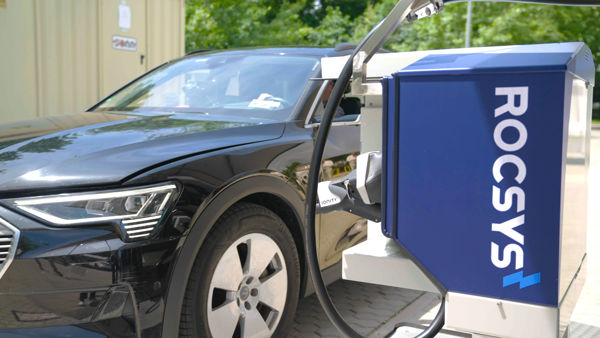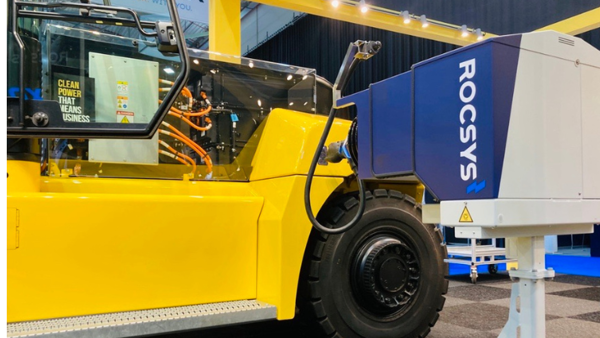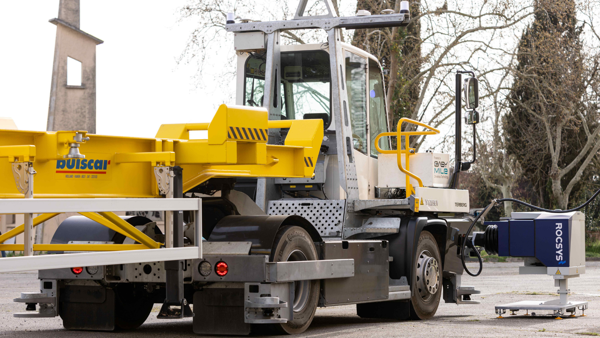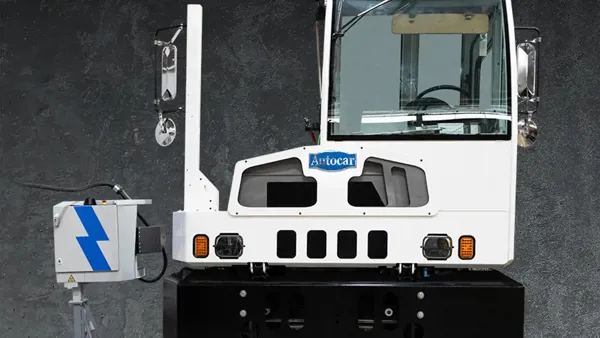
July 17, 2024
With new autonomous driving vehicle services rolling out around the world, robotaxis are seen as the pinnacle of autonomous mobility and serve as an inspiring example of where the future of transportation could be headed. And while the focus on this cutting-edge technology has been on the vehicles, the user experience, and the roller-coaster path to maturity, there’s a speedbump in the road that not everyone is seeing: how do fleets of driver-less vehicles charge and service themselves?
Crijn Bouman, Co-founder and CEO
In the previous blog, we discussed many of the unseen challenges required to support a sizeable AV fleet and how manual charging can significantly drive-up operating costs due to the large amount of people required to keep a fleet on the road. Now let’s look at some other parts of the equation.
Maximizing Dollars per Charge
If you’re a robotaxi company, there’s one guiding principal that you live by:
Money is earned on the Road
Which means charging & servicing = NOT being on the road, earning money!
A ride hail service can generate $50 - $70 in revenue in an hour, so not being on the road is expensive for a robotaxi service. Charging should require as little time as possible with fast charging being a critical component of the operation.
But wait, there’s more: when a robotaxi needs to charge, it needs to navigate back to a charging hub. This is called transit time. Transit time results in dead miles – driving without earning money, as a vehicle making it’s way back to a charging hub can’t carry passengers. If a vehicle takes an hour to travel across town or in rush hour traffic (both a very real possibility in cities like LA) that’s a long time for it to be out of operation and not earning money!
So if we accept:
The charging speed and the location of these charging sites is critical to the efficiency and profitability of a robotaxi fleet. A higher charging speed allows the vehicles to be on the road more and earn more money, shortening the transit times has the same effect.
The Large Hub Model
Most robotaxi fleets will initially be supported by multiple large service hubs located around the city where vehicles are charged, inspected and cleaned. Given the footprint of many cities in the US, they could be as much as 15 miles apart. This distance plus the average speed that robotaxis must travel in traffic means that only having those few large hubs potentially introduce a large number of dead miles. So how do you reduce dead miles and increase money earned on the road? Charging is the most frequent support function (3-4x per day, per vehicle) and therefor, ideally, you want charging hubs on every street corner, allowing robotaxis to easily charge between fares thus decreasing transit time and dead miles.
Easier than it sounds, unfortunately. Building a charging hub is a lengthy and expensive process:
So, it can be difficult to find suitable locations for a hub.
In addition, finding large sites that can accommodate a fleet of vehicles is not that easy in most urban areas, and obtaining permits for large sites is also a lengthy (and costly) process. So, building many large hubs starts to sound like a very daunting project with a lot of complexities. The landscape looks something like this:

Utilizing Local Charging
So, what’s the solution? Building smaller hubs or utilizing charging stations in residential areas may be a lower barrier to entry. Creating a business model that allows robotaxis to utilize available chargers at residential or commercial properties would both reduce dead miles and provide more convenient transportation options for people at those locations. The charge speed would vary depending on the type of charger, but this could be offset by allowing them to charge more often and in more locations. You would also need to automate the charging process, either through robotics or, since the charging speed and power level is low, induction charging. At a high volume, both options may be suitable solutions, where we estimate that at scale robotics would be the more cost-effective option and would not require significant modification to vehicles, charging equipment, or infrastructure, leveraging the existing ecosystem.
The main aspect is to figure out a business model where people would allow robotaxis to charge at their residential or commercial property. Maybe this can be solved with a revenue share model or a co-ownership model where people partially own the vehicle, as Tesla is suggesting.
Either way, at these locations you are charging at a slower rate (4-8 hours roughly). For a dedicated robotaxi service this means lost revenue. So, this model might be best utilized to support existing charging routines – supplementing existing hubs during non-peak hours.
Hands-Free Micro Hubs with Fast Charging
With robotic attendants as introduced in the previous blogpost, you can build a smaller robotaxi charging hub almost anywhere. For example, by creating smaller charging hubs, which can automatically charge 6-10 vehicles in parallel through a robotic attendant, the power requirements stay in the hundreds of kilowatts. This kind of power is available at some commercial properties such as office buildings, parking garages industrial sites, etc. and the space requirement for the station would be smaller, opening up more potential locations. This formula could potentially be scaled quickly!
Let’s call this concept an AV micro hub. This concept could cover a city quickly and provide a very flexible charging backbone for a robotaxi fleet in addition to the large service hubs. It has fast charging capability (30-60 mins.), is easy to implement at many locations, and, as it is served by a robotic attendant, could be operated in numerous locations with a suitable grid connection, which at this power level is less difficult to find. A denser network of automated AV micro hubs with fast charging capability could be a big opportunity in eliminating transit time to charge, and therefore optimize the ROI for a robotaxi operator. We will explore this concept further in a next post.
While there are numerous challenges to charging a robotaxi fleet, as this industry continues to evolve, new solutions come to the forefront. In this series we’ll continue to explore robotaxis and the charging methods that will keep this industry in motion.
July 17, 2024
June 13, 2024
June 12, 2024
April 16, 2024
March 26, 2024




